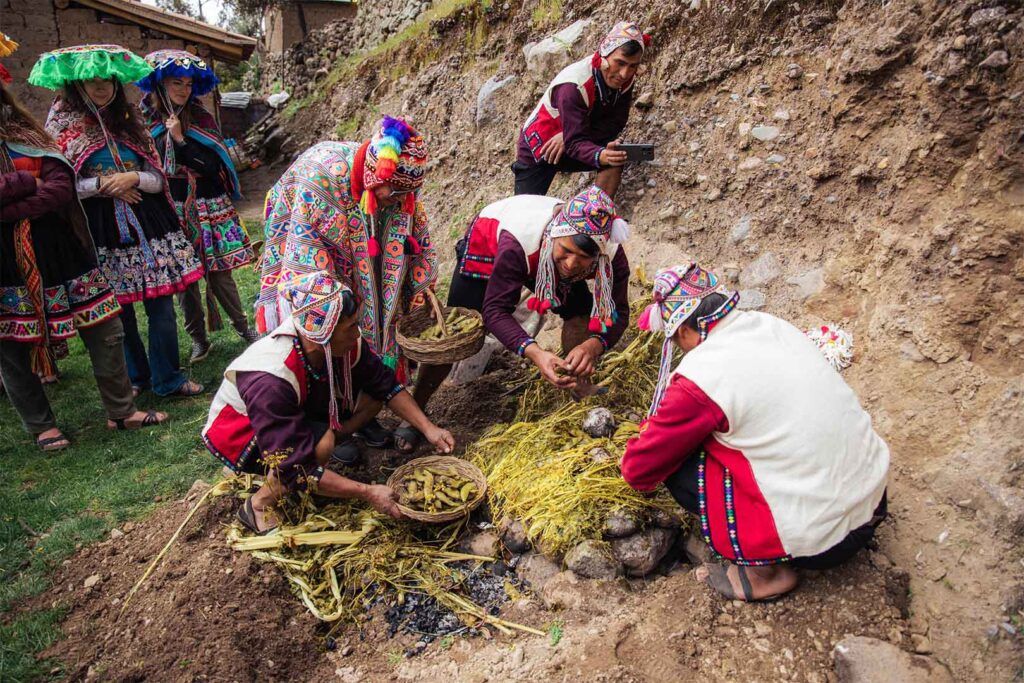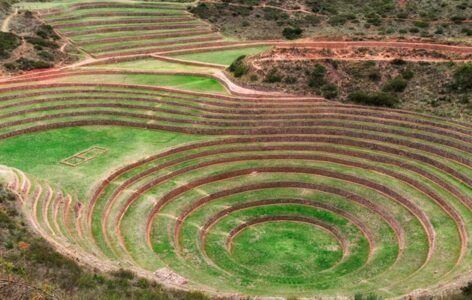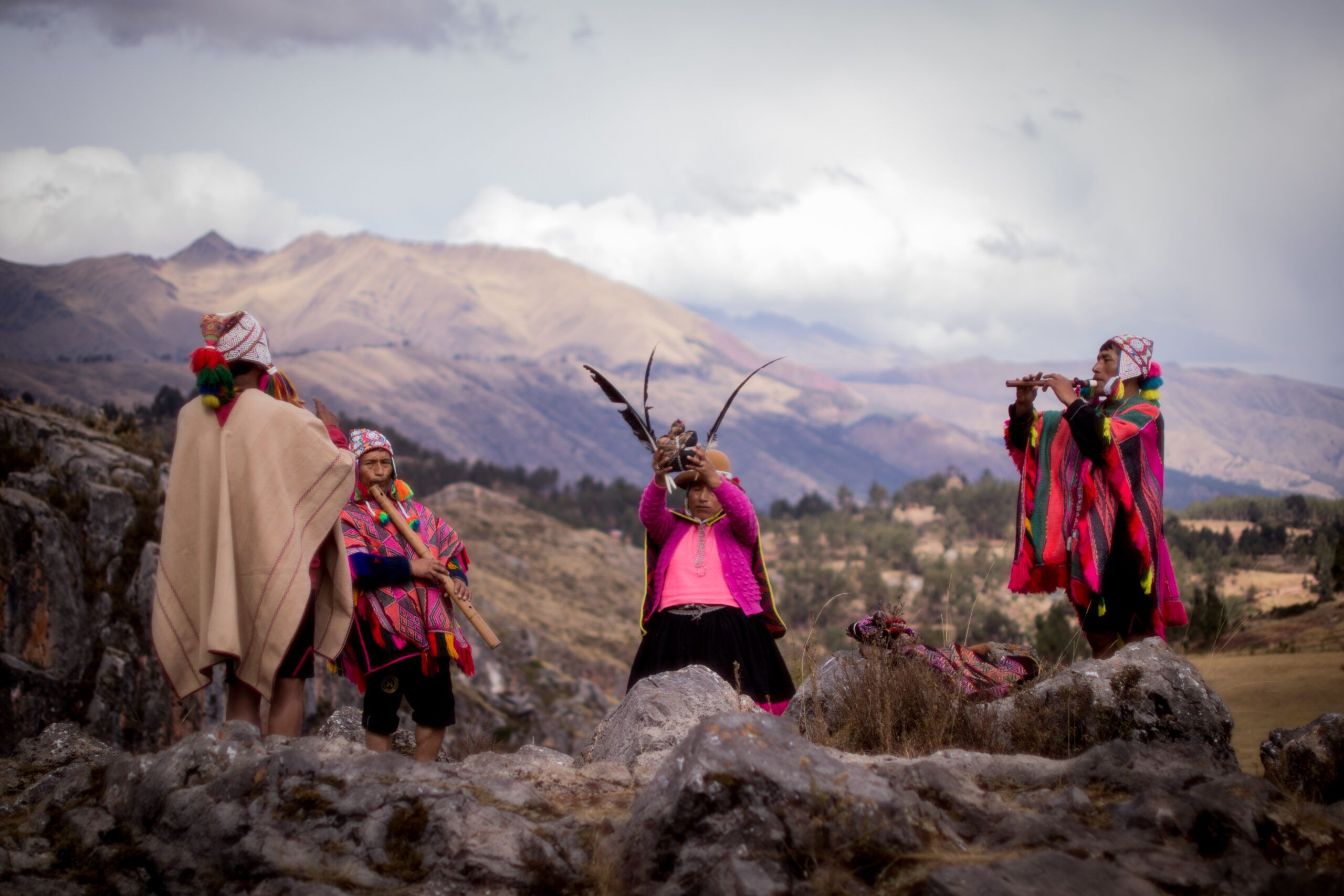Cusco’s cuisine is a living chronicle of history, where ancient Inca ingredients, colonial fusions, and modern innovation converge.

This journey through Cusco’s flavors reveals not just what Peruvians eat, but who they are—a people shaped by empires, conquest, and culinary resilience.
Flavors of History – Cusco’s Cuisine Tapestry
The Inca Empire cultivated nutrient-dense foods long before modern nutrition science recognized their benefits.
Among them, maca root (Lepidium meyenii) was initially used as animal fodder to strengthen livestock in high altitudes (Gonzales, 2012). By the late 20th century, its adaptogenic properties gained global attention, leading to its classification as a superfood (Wang et al., 2007).


Similarly, cañihua (Chenopodium pallidicaule), a drought-resistant grain, was a staple in Inca warriors’ diets due to its high protein content (Repo-Carrasco et al., 2003). Today, it is being reintroduced in gourmet cuisine for its nutty flavor and nutritional profile.
Ancient Cuisine Techniques
The Pachamanca (from Quechua pacha = earth, manca = pot) is more than a cooking method—it is a spiritual ritual honoring Pachamama (Mother Earth). Layers of meat, potatoes, and herbs are slow-cooked in underground stone ovens, a tradition preserved since pre-Columbian times (Sillar, 2000).

Another technique, Huatia, involved baking potatoes in adobe ovens, serving as a quick meal for farmers. This method highlights the Inca’s ingenuity in food preservation and efficiency (Coe, 1994).

Colonial Kitchen Revolutions
The Spanish Ingredients That Changed Everything
The Spanish conquest introduced wheat, beef, and dairy, altering indigenous diets.

Wheat replaced maize in bread-making, while dairy led to new dishes like queso helado (a cinnamon-infused frozen dessert) (Civitello, 2011).
Chicha morada, originally a ceremonial drink made from purple corn, evolved into a national beverage after colonial-era sugar sweetening (Weismantel, 1988).

The New Andean Cuisine Movement

Chef Gastón Acurio revolutionized Peruvian cuisine by elevating traditional dishes to haute cuisine, blending indigenous ingredients with modern techniques (Acurio, 2015). Meanwhile, Virgilio Martínez’s MIL restaurant in Moray highlights altitude-based ingredients, creating a “vertical cuisine” concept (Martínez, 2019).
Travelers now seek immersive experiences, such as cooking classes with Quechua grandmothers, who teach ancestral techniques (Cordero, 2020). Underground supper clubs, like Kusykay, experiment with avant-garde Andean cuisine, fusing tradition with innovation (García, 2021).
References
- Acurio, G. (2015). Perú: The Cookbook. Phaidon Press.
- Civitello, L. (2011). Cuisine and Culture: A History of Food and People. Wiley.
- Coe, S. (1994). America’s First Cuisines. University of Texas Press.
- Cordero, M. (2020). Culinary Tourism in Peru: Tradition and Modernity. Lima Press.
- García, E. (2021). Andean Avant-Garde: The New Peruvian Cuisine. Food Culture Press.
- Gonzales, G. (2012). “Ethnobiology and Ethnopharmacology of Maca.” Journal of Ethnobiology, 32(1), 45-59.
- Mann, C. (2011). 1493: Uncovering the New World Columbus Created. Knopf.
- Martínez, V. (2019). Central: The Cuisine of Peru. Ten Speed Press.
- Moreno, M. (2013). Sweet Colonial Peru: Desserts and Convent Traditions. Editorial San Marcos.
- Repo-Carrasco, R. et al. (2003). “Nutritional Value of Cañihua.” Food Chemistry, 81(1), 109-115.
- Sillar, B. (2000). “Pachamanca: Earth Oven Cooking in the Andes.” Food and Foodways, 8(4), 225-254.
- Wang, Y. et al. (2007). “Maca: An Andean Crop with Health Benefits.” Phytochemistry Reviews, 6(1), 1-18.
- Weismantel, M. (1988). Food, Gender, and Poverty in the Ecuadorian Andes. University of Pennsylvania Press.



